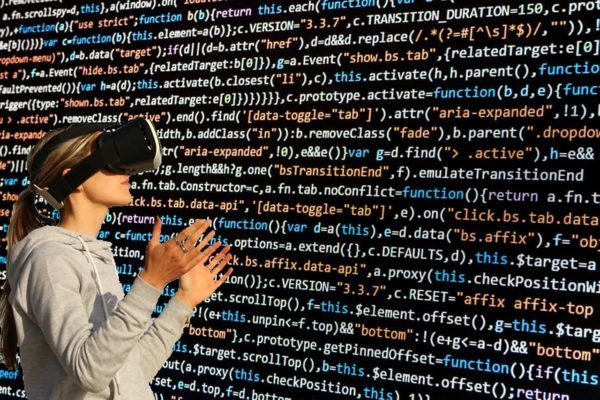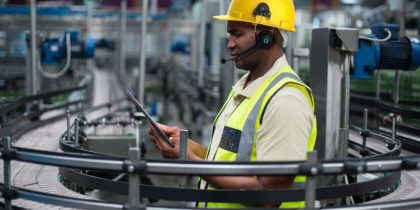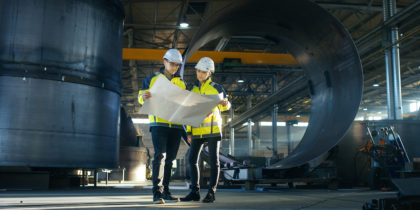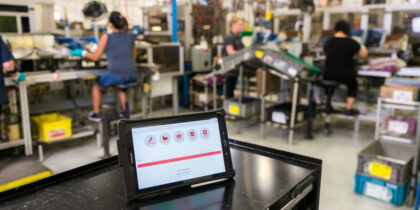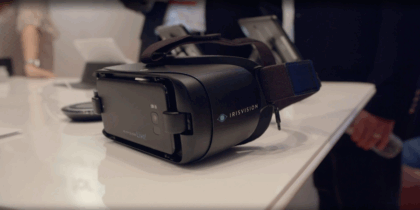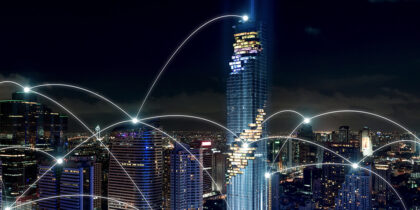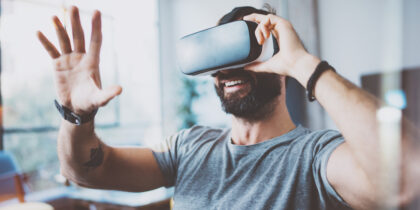In this News Insight, Business2Community highlights five brands that are on the leading edge of VR. Tune in to our webinar to learn how your can create immersive 360 video to elevate your brand or business. —Samsung Insights editorial team
Virtual reality (VR) is quickly rising in popularity amongst marketers; it’s an excellent way for brands to create a digitally-focused, immersive experience that promotes consumer engagement.
If you’re interested in seeing how VR can be applied across an array of sectors, check out how TOMS, Patrón, Marriott International, Vroom and McDonalds use VR technology in their brands strategy:
1) Retail: TOMS Shoes
TOMS business model is grounded in making a positive impact in the world. For every pair of TOMS shoes you purchase, the company donates a pair to someone in need. To bring this vision to life, TOMS has created “a walk in their shoes” campaign. Shoppers use a VR chair to experience the journey as one customer from California travels to Columbia to meet a child that benefits directly from his shoe purchase.
TOM’S founder, Blake Mycoskie, explains, “VR is the greatest technology I’ve seen to create empathy.” It’s a captivating way for customers to virtually witness the impact that their contribution makes to the world.
2) Beverages: Patrón Spirits
Patrón has created a VR experience from the perspective of a bee, that takes customers on a personal tour of its Hacienda distillery and headquarters in Jalisco, Mexico. With a custom-built drone connected with seven GoPros, users experience the sounds and sights of the production, aging and bottling process of the tequila. Patrón Spirits global chief marketing officer Lee Applbaum, explains “virtual reality paves the way to opening up a dialogue about how most anything is intricately produced.”
With ground-breaking technology and impeccable footage, Patrón raised the bar for creative storytelling using VR.
3) Event Planning: Marriott International
In addition to hotel services, Marriott offers a variety of venues for social and corporate events. Event organisers and customers can get a realistic idea of how their event could look with a VR powered headset. Users can see 360-degree, 3D views of custom-designed room set-ups, making event-planning easier than ever. According to Diego Herrera, CEO of Zebra Design, “It offers your customers the unprecedented opportunity to try before they buy.”
Marriott provides an innovative way for customers to plan their events, without having to be physically present. Bringing the venue to the customer with VR technology is an excellent way to promote additional sales.
4) Automotive: Vroom
Online car retailer Vroom makes the online car-buying experience as realistic as visiting a dealership. Vroom has created a VR powered showroom, where a user can wear a VR Google cardboard headset to browse 15 different car models, priced between $25,000 to $50,000. From virtually opening the car’s glove compartment box, to hearing real engine sounds and taking 360-degree view test drives, customers can view and experience car models from the comfort of their own homes.
It’s about giving customers a memorable experience. Vroom’s use of VR technology is an excellent example of how a retailer can bring an online shopping journey to life, which helps convert potential leads into actual customers.
5) Restaurant: McDonalds
McDonalds started what is popularly coined as “Happy Goggles” in Sweden, by turning a Happy Meal Box into a cardboard VR headset. According to Jeff Jacket, marketing director of McDonalds, “we try to bring education to our Happy Meals, and the answer was kind of staring us in the face.” Through virtual reality, users can enjoy various interactive and immersive games, such as a skiing activity.
For McDonalds, the Happy Goggles VR headset was designed to spark the attention of children. This tool increases in-store engagement and also promotes the idea of repurposing a disposable item for a different use.
From driving sales to increasing brand engagement efforts, VR is an excellent tool that can be used to immerse consumers in your brand.
This article originally appeared in FreshMinds Blog.
This article was written by Julia Pizzutti from Business2Community and was legally licensed through the NewsCred publisher network. Please direct all licensing questions to legal@newscred.com.
Interested in creating immersive VR content? Download our ultimate guide to 360 video production.
![]()
